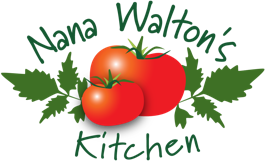Growing a kitchen herb garden
Growing herbs is one of the easiest, most rewarding types of gardening. They do well in containers if you are short on space as long as they have plenty of sun and drainage. They will exceed expectations in production and require minimal maintenance. One of the most important things to keep in mind when growing herbs is to keep them trimmed to prevent them from going to seed. You can use the blooms in cooking or in flower arrangements. Once annual herbs start to flower they are intent on making seeds and completing their life cycle. To extend the season prune off blooms before they start to produce seeds.
ANNUALS
Basil – there are too many varietals to even begin to list so I will focus on Genovese, or sweet, basil. This is my favorite of all of the herbs. It can also be one of the trickier herbs to successfully grow if you live in a humid climate. It is susceptible to blight, downy and powdery mildew. It prefers full sun, loose, well drained soil and infrequent water. It’s leaves are also a frequent victim of soil borne bacterial diseases. The key to having an abundant crop of basil is to give the plants plenty of space and harvest for pesto or drying early in the season. I usually put in several plants so I can be assured of my year’s supply of pesto. They have developed some newer varieties that show promising disease resistance but have yet to duplicate the sweet flavor and aroma we have all come to expect.
Basil, Thai– the soil, light and water requirements are no different than sweet basil, the good news is it seems to have tremendous disease resistance and provides stunning color when used ornamental.
Cilantro – cool season herb that bolts rapidly with temperatures over 80F. Try direct seeding in early spring, about 2 weeks before last frost date, or in the fall for zone 7 or further south. It prefers to dry out between watering so 1-2 times weekly give it a deep drink and it will be happy. Cilantro seeds are coriander so don’t forget to harvest those as well.
Dill – prefers well drained soil but tolerates a fair amount of dense clay. Dill will also grow with only 4-6 hours of sunlight if you have a sun challenged yard..Dill matures quickly – so be ready to harvest the heads before they bloom, you can freeze them for later use to make pickles. Keeping the blooms picked will also prolong the harvest as it tends to want to be finished by August. I typically sow my dill seeds when my cucumber vines have 4-6 leaves, usually that gives me fresh heads when it’s time to make pickles. Alternatively you can let the heads go to seed and dry on the stalk and use them for seasoning as well. Dill will frequently act a self seeding perennial. The dried leaves are wonderful in chicken soup come winter and add a delightful flavor to dips and sauces.
PERENNIALS
Chives – are a cool season perennial and, like most plants in the allium family, they like loose, well amended soil. Their season can be prolonged if given afternoon shade in hotter climates Their spiky foliage is one of the first greens of spring and they are quite striking as an accent plant. The delicate purple flowers that resemble balls are lovely and are actually composed of many tiny flowers that are wonderful to spread over a salad or as a garnish.
Mint– will grow in sun, shade or anywhere in between – Warning! All varieties of mint are invasive and will choke out anything in its path. If you have a dead zone where nothing else grows it will spread and act as a ground cover. If not I suggest growing it n a container or across the road in your neighbor’s yard, the one you don’t like who is always into everyone’s business!
Rosemary – think hot, dry, rocky, poor soil and no wet feet! Nothing will kill rosemary faster than too much water except maybe a flame thrower. In zone 7 and above it can become a large shrub – don’t hesitate to prune it aggressively. It has the added bonus of beautiful blooms that attract pollinators.
Sage– will grow in less sunlight than many herbs. I have it getting about 4 hours a day and it is perfectly happy there in lousy, dense soil with benign neglect. I prefer the broad leaf, common sage although most culinary varietals have lovely soft, almost furry petals and will bloom beautifully in mid summer. Sage is perennial in Zone 5-9. Sage dries well but will lose it’s aromatic properties quickly. Try flash frying the fresh leaves and serving on buttered Pasta with parmigiana cheese.
Thyme – There are several varietals to choose from but my favorite for culinary purposes is common thyme. It is easy to grow in poor soil and requires little watering in times of drought. Lemon Thyme is also easy to grow, makes a lovely dried herb for chicken or fish, is a hardy perennial in and will spread rapidly. It also makes a nice border plant or you can use creeping or woolly thyme to edge pathways. If you live in a cooler climate you might look for German Thyme.
True Greek oregano – Mounding, creeping, crawling, spicy stuff – DO NOT be talked into any other varietal! When dried they do not retain the traditional flavor we expect to find in Italian and Greek dishes. Oregano is often perennial in Zone 6 and almost always in warmer climates, it will also act as a self seeding annual if left to go to seed. It is fine in sub-optimal soil with good drainage and tolerates drought well. Think Mediterranean-high, dry and sunny. Try it as a border plant in your flower garden, it makes a lovely fragrant addition.
